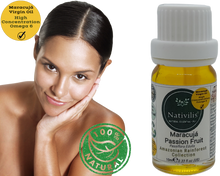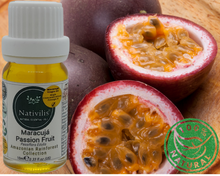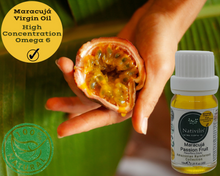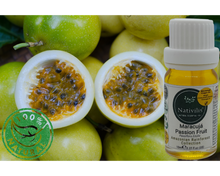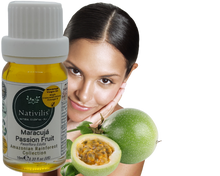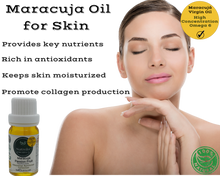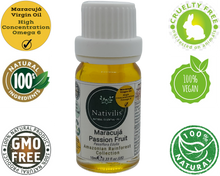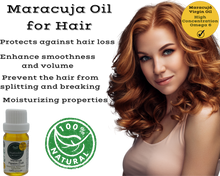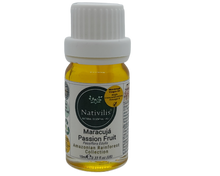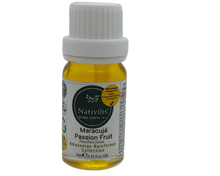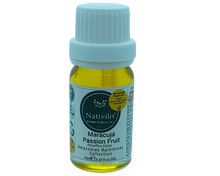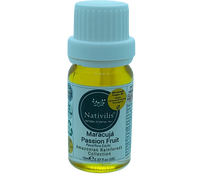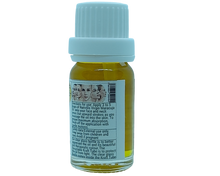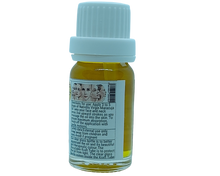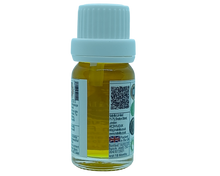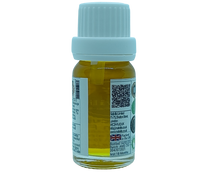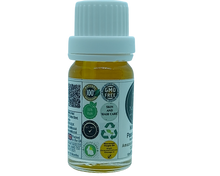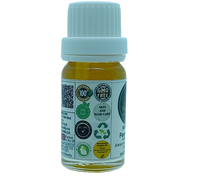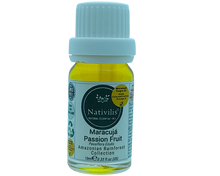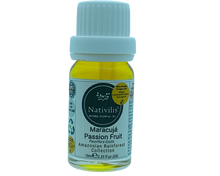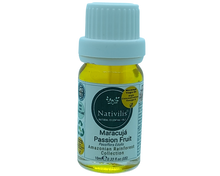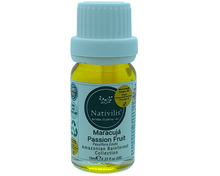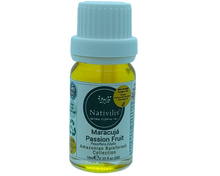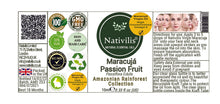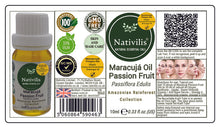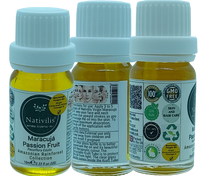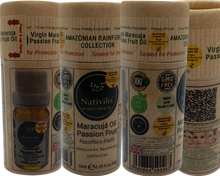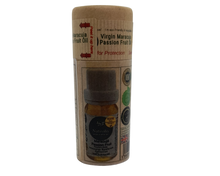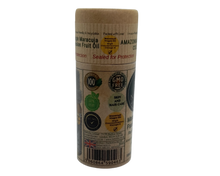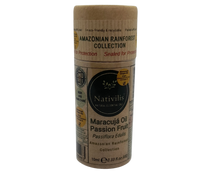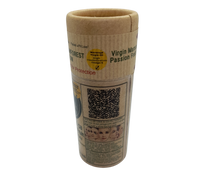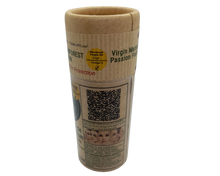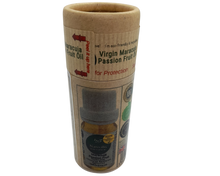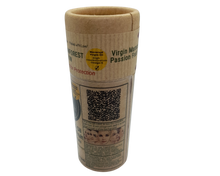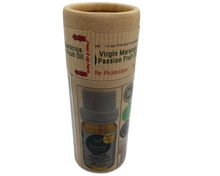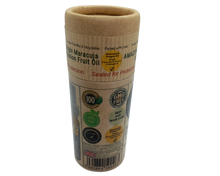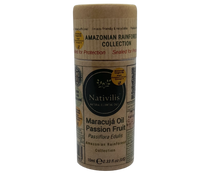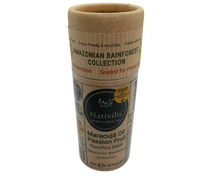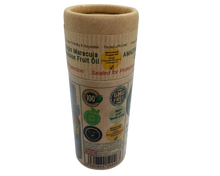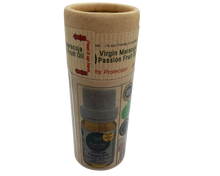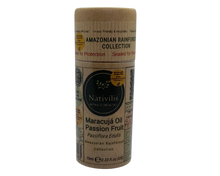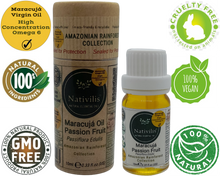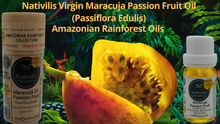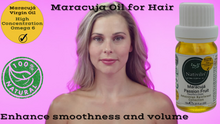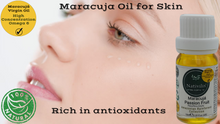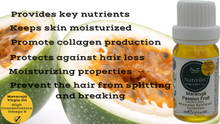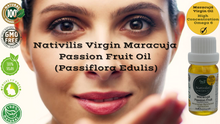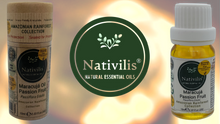
 Nativilis Virgin Maracuja Passion Fruit Oil - (Passiflora Edulis) - Amazonian Rainforest Collection High Concentration Omega 6 - Sebum Regulating Properties Soothing on Skin Scalp - Copaiba Benefits
Nativilis Virgin Maracuja Passion Fruit Oil - (Passiflora Edulis) - Amazonian Rainforest Collection High Concentration Omega 6 - Sebum Regulating Properties Soothing on Skin Scalp - Copaiba Benefits
ECOLOGY
The passion fruit originated in tropical America, prefers hot and humid climates, and is cultivated in all tropical countries. Currently, Brazil is the world’s leading producer of passion fruits. In the state of Pará, there is a long tradition of cultivating passion fruit, especially in the Bragança region, where 33,000 tons of fruit were produced in 2008.
Passion fruits are climbing plants that need a support structure to grow on because the stems of this plant are semi-woody and do not allow it to stand on its own. The support structure for passion fruit is built with wooden stakes and smooth wire. A good support system allows the branches to have enough space to grow, which allows productive branches to receive the proper amount of light. Commercial production starts ten months after planting. The yield of yellow passion fruit (Passiflora edulis) is estimated to be approximately 10 tons/ha/year. The production cycle usually lasts about 2 to 3 years.
The peel of passion fruit, which represents 40% to 50% of the fruit weight, is considered industrial waste, as well as the seeds, which represent about 6% to 12% of the total fruit weight. Oil can be extracted from the seeds for industrial use. The oil yield from the dry seeds of passion fruit reaches about 25%. One hectare can produce approximately 480 kg of dry seed, which equals 96 kg of oil when using cold extraction.
HARVESTING SEASON


-
Name: Nativilis Virgin Maracuja Passion Fruit Oil
- Scientific name: Passiflora edulis
- Part of Plant: : Seed
- Cultivation: Plantation
- Production Process: Cold Extraction
-
Country of Origin: Brazil
-
Major Compounds: Fat Acid composition: Palmitic , Stearic ,Oleic ,Linoleic, Linolenic, (See the Certification of Analysys)
- Blends well with: Copaiba. Excellent base oil for any blend.
- Source of raw material: Amazonian Rainforest / Brazil
- Batch number: AMO 253 - 004/072021
- Preservatives: Absent
- Number of analysis: 234/21
- Solvent extraction: Absent
- Manufacture date: 07/07/2021
- Origin of the vegetable drugs: Plantation
- Shelf life: 24 Months
- Traceability: Guaranteed
- SAFETY HEALTH: Product harmless, for cosmetic use only. Not suitable for human consumption.
- STORAGE: Should be stored tightly sealed, protected from light and heat.
-
Directions for use: Topical use:
Add 10 drops of Nativilis Virgin Maracuja Passion Fruit Oil - (Passiflora Edulis) - Amazonian Rainforest Collection to 20 ml of natural oil (Argan, Sunflower , Jojoba , Sweet Almond)
Creams / Anti Signs Serum – Dosage 5-20% -
Moisturizing creams – Dosage 3-10%
Blend very well with Copaiba Oil
Obs: 1ml = 25 drops -
Best Use: 24 Months
- Shipping Weight:0.08 kg
- SKU: Passionfruit-10-AO-5060864590494FG
- Type: GTIN-13 - Number: 5060864590494
- Volume: 10 ml - Clear Bottle Glass with Tamper Evident Euro Drop Cap
- Dimensions Outer Packaging Recyclable Tube Cardboard Paper Kraft :102 mm (H) x 36 mm (D)
-
Safety data: External use recommended. Internal use under guidance from
a qualified practitioner. Keep away from children and eyes. Avoid if pregnant. Store in a cool dry place. - Clear Glass Bottle: We sell in clear glass bottles to be able to appreciate their beautiful and therapeutic colours.
- The Outer Packaging Recyclable Tube Cardboard Paper Kraft are to protect the oil from light , because light slowly degrades the oil over time.

REFERENCES
CALVACANTE, P. B.: Frutas Comestíveis da Amazônia, 1996, 6a Ed , Edições Cejup - Museu Paraense Emílio Goeldi, Belém. .
MALACRIDA, C. R. et al (2012): Yellow passion fruit seed oil (Passiflora edulis f.flavicarpa): physical and chemical characteristics; Braz. arch. biol. technol. vol.55 no.1 Curitiba Jan./Feb. 2012. http://www.scielo.br/scielo.php?script=sci_arttext&pid=S1516-89132012000100016 .
PESCE, C. OLEAGINOSAS DA AMAZÔNIA. BELÉM: OFICINAS GRÁFICAS DA REVISTA VETERINÁRIA, 1941. .
TOCCHINI, R. P. (1994): Processamento: produtos, caracterização e utilização. In: Maracujá: cultura, matéria-prima e aspectos econômicos. Campinas: ITAL, p. 161-175. .
ZERAIK, M. L., et al: Maracujá: um alimento funcional? Rev. bras. farmacogn. vol.20 no.3 Curitiba June/July 2010. .
















































